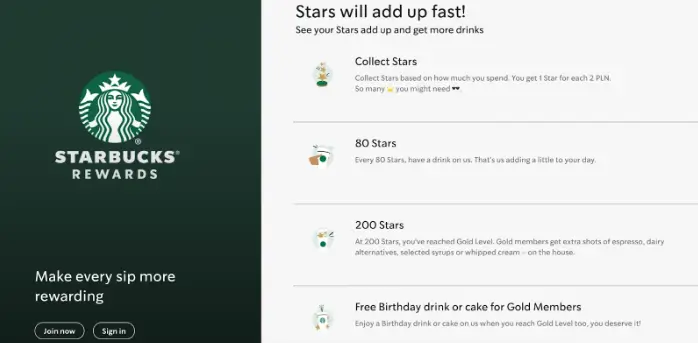
Piyush

Returns can be a significant hurdle for retail businesses. After completing a sale, you might face the item returning to your shelves, with funds departing your account when a customer requests a refund.
But what if there’s a more advantageous approach to handling returns that can boost sales, keep capital within your business, and enhance customer loyalty?
Online store credit offers a value that customers can use exclusively in your store, acting as an alternative to traditional cash refunds. By choosing online store credit, you motivate your customers to continue shopping, retain the cash within the company, and decrease the considerable volume of returns your team manages.
This guide will explore strategies to use and promote online store credit as a preferred refund option in your retail environment.
Table of Contents:
Online Store credit represents a value that retailers provide to customers as an alternative to traditional cash refunds. Since this credit must be used at the same store, it helps retain funds within the business whenever products are returned. Store credit is not equivalent to cash; it is only valid at the retailer that issues it. However, it holds a value that can be used like cash to purchase items at that specific store.
If you are a store owner, imagine your customer buys a pair of sneakers from your online boutique, but they don’t fit them when they arrive. Instead of a cash refund, your store can issue them store credit for the amount of the purchase. Next time they shop with you, they can select a new pair or any other product and use their online store credit at checkout, only paying any additional cost if the new item is more expensive.
When retailers offer store credit, they provide customers with a specific dollar amount that can be used for future purchases within their business. This online store credit acts as an internal currency, ensuring that the funds stay within the retailer’s ecosystem rather than being refunded back to a bank account.
What is store credit exactly? It’s not just a simple refund; it represents a more strategic approach to customer retention. Unlike traditional refunds, store credit is not transferable across different stores or brands. This exclusivity benefits both the customer and the retailer: customers receive a flexible yet dedicated spending option, and retailers keep the funds within their business, potentially boosting future sales.
Store credit can come in various forms, such as gift cards, loyalty rewards, or store-specific credit cards. These forms are typically exclusive to the issuing store, and in many cases, they do not expire, offering long-term value to customers. This system is particularly effective in fostering customer loyalty and encouraging repeat business, as it simplifies the exchange process for returns and transforms potential losses from returns into future sales opportunities.
By using store credit and online store credit systems, businesses can enhance their customer service experience, offering a tangible incentive that encourages customers to continue shopping with them, thereby solidifying customer loyalty and improving overall satisfaction.
Offering store credit is a strategic approach adopted by many of the world’s top retailers because it enhances flexibility and fosters customer loyalty and spending. Here are three main advantages of implementing store credit, especially in the form of online store credit, as opposed to providing cash refunds:
Store credit acts as a powerful incentive for customers to return to your store. As a key component of a comprehensive customer loyalty program, online store credit demonstrates to customers the value of their continued patronage.
For instance, a hypothetical retailer, EcoStyle Apparel, uses store credit to encourage customers to invest in sustainable fashion choices. By returning items, customers receive credit that they can use to continue supporting eco-friendly fashion without immediate cash expenditure.
While it might seem paradoxical, store credit can actually lead customers to spend more than they originally planned. Similar to the psychological spending boost observed with credit card usage, customers with store credit feel more liberated to exceed the credit amount. For example, a home goods store might issue $30 in store credit, which customers often use as a base, adding additional funds to purchase higher-value items like luxury bedding or high-end kitchen gadgets.
Returns are a necessary part of retail that can complicate revenue streams. Store credit mitigates these losses by transforming potential return transactions into exchanges. This is particularly effective in industries like electronics, where customers might return a gadget due to preference rather than functionality.
By offering store credit, businesses like Everdion encourage customers to choose an alternative product rather than seeking a refund, thus retaining sales within the company. Understanding what is store credit and its implications can greatly benefit both retailers and customers
Store credit helps to keep the cash in business. By offering store credit or gift cards instead of cash refunds you maintain the cash flow in your business. The best tactic to use is to offer gift cards of values higher than the amount of the refund hence it entices customers to spend more.

Retailers have several strategies for issuing store credit, enhancing flexibility and customer retention. Here’s a breakdown of the four main methods used to offer online store credit and the benefits associated with each:
Often, when customers return or exchange an item, they are offered store credit instead of a cash refund. For instance, if a customer returns a $30 jacket, the retailer might offer them a $5 online store credit to encourage another purchase. This approach not only retains customer engagement but also helps maintain the cash flow within the business.
Retailers provide store credit through options that allow customers to pay over time. Modern solutions include services like “Buy Now, Pay Later” which integrate seamlessly with online platforms such as Shopify. For example, a hypothetical electronics retailer might offer installment payments on high-value items, making expensive products more accessible while increasing the store’s sales volume.
Purchasing a digital gift card is essentially buying store credit that can be given to others. This is especially popular during the holiday season when customers purchase digital or physical gift cards. For instance, a bookstore might offer gift cards that customers can buy for friends or family, which encourages new customers to visit the store or website.

A customer loyalty program rewards returning customers for their continued business. For example, a coffee shop could offer a points system where each purchase adds points to a customer’s account, which can be converted into online store credit. Once customers accumulate a certain number of points, they might receive a credit that can be used for future coffee purchases, effectively using what is store credit to enhance customer loyalty.

There are various strategies your store can employ to leverage online store credit effectively, and here are three significant methods:
According to Nielsen, have highlighted that six out of ten consumers are opting for more environmentally friendly, sustainable, or ethical purchases since the COVID-19 pandemic. For many small retailers, fulfilling a commitment to social responsibility can be financially challenging. Utilizing online store credit as a form of charitable giving allows your business to contribute meaningfully without directly impacting your cash flow. This could involve:
Take inspiration from the success of direct-to-consumer brands like Rothy’s and Warby Parker, which have grown significantly through innovative referral programs. Encourage your customers to promote your brand by offering online store credit for referrals that convert into new sales. This strategy not only drives new customer acquisition but also enhances loyalty among existing customers. As suggested by industry experts, providing perks like bonus points or discounts on future purchases with online store credit can effectively motivate customers to prefer store credit options.

An expansive return policy can significantly influence purchasing decisions. Statistics show that two-thirds of consumers review a retailer’s return policy before buying, and over half are deterred by unsatisfactory policies. By offering online store credit for returns, you can introduce more flexibility into your return policy without losing revenue. This approach allows for extended return periods and fewer restrictions on how returns are made (such as needing original tags or receipts), making customers feel more secure and likely to make purchases.
Make your online store credit more appealing by attaching time-sensitive offers to it. For example, offering a bonus credit if the store credit is used within a certain period can accelerate the return of customers to your store, prompting quicker and potentially more frequent purchases.
Use online store credit as an incentive for customers to leave reviews on your products or services. This not only can improve the quality and quantity of your reviews but also encourages customers to engage with your brand and make subsequent purchases using the credit they earn.
Personalize marketing campaigns based on the customer’s previous purchases and offer tailored store credit deals that match their buying behavior. For instance, if a customer frequently buys books from a specific genre, offer them store credit that can be used towards the next purchase in that same genre.
Encourage more spending by implementing a graduated rewards system where the value of the store credit increases with the amount spent. This method encourages larger purchases, as customers see the direct benefits of spending more.
Acknowledge customer loyalty by offering store credit on special milestones, such as the anniversary of their first purchase, their birthday, or after a set number of purchases. This not only delights customers but also reinforces their good feelings about your brand, boosting what is store credit used for and how it can benefit them.

In the current retail landscape, understanding what is store credit and how to effectively implement an online store credit program are crucial for enhancing customer loyalty and retention. 99minds provides a versatile omnichannel application that empowers businesses to offer store credit both in-store and online, seamlessly integrating with your existing operations.
99minds platform integrates effortlessly with your sales systems, allowing you to manage store credit across physical and digital storefronts. This integration ensures a consistent experience for customers, whether they are shopping online or in-store, thereby enhancing the utility and appeal of online store credit.
A standout feature of 99minds is the ability for merchants to issue refunds directly as store credit. This functionality is particularly beneficial in retaining sales within your business ecosystem and improving customer satisfaction by offering flexible refund options. Instead of returning money, you encourage customers to reinvest in your brand, enhancing customer loyalty and reducing the financial impact of returns.
Tailor your store credit system to fit your business needs and customer preferences. With 99minds, you can customize how store credit is issued, redeemed, and managed, making it a powerful tool to drive repeat business. Whether it’s setting expiration dates, minimum spend requirements, or special conditions for credit usage, 99minds gives you the control you need.
Gain valuable insights into customer behavior and preferences with advanced analytics provided by 99minds. Understanding how customers use their store credit can help you refine your marketing strategies and loyalty programs, ensuring they are as effective as possible in increasing customer retention and satisfaction.
Encourage greater engagement and repeat purchases by integrating store credit into your overall customer loyalty strategy. 99minds helps you design a program that not only rewards customers but also incentivizes them to return to your store, enhancing the lifetime value of each customer.
In conclusion, understanding what is store credit and implementing an effective online store credit program are essential strategies for enhancing customer retention and loyalty. By adopting a comprehensive store credit system like the one offered by 99minds, businesses can provide flexible and appealing options that encourage customers to continue engaging with their brand. Whether you’re looking to streamline refunds, boost customer engagement, or enhance the overall shopping experience, online store credit is a powerful tool that can drive growth and customer satisfaction. Embrace these strategies to transform one-time buyers into loyal customers and strengthen your business’s future.